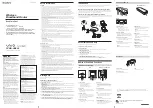
LN920 HW Design Guide
1VV0301730 Rev. 1
Page 61 of 81
2021-08-11
Not Subject to NDA
10.
APPLICATION GUIDE
Debug of the LN920 Module in Production
To test and debug the LN920 module integration, it is strongly recommended to add test
points on the host PCB for the following purposes:
•
Checking the connection between the LN920 itself and the application
•
Testing module performance by connecting it to an external computer
Depending on the customer application, these test pins include, but are not limited to,
the following signals:
•
RESET#, W_DISABLE1#
•
VBATT, GND
•
USB_D-, USB_D+
•
USB3.0_TX-, USB3.0_TX+, USB3.0_RX-, USB3.0_RX+
In addition, the following signals are also recommended (but not mandatory):
•
GPS_DISABLE#, WOW#, WWAN_LED#
•
GPIO1, GPIO2, GPIO3, GPIO4, GPIO5, GPIO6, GPIO7, GPIO8, GPIO9, GPIO10
Bypass Capacitor on Power Supplies
When a sudden power supply voltage variation or interruption, the steep transition causes
effects such as overshoot and undershoot. This abrupt voltage transition can affect the
device causing it to not operate or to malfunction.
Bypass capacitors are needed to prevent issues: special attention to this issue must be
paid when designing the application board.
The length and width of the power lines must be carefully dimensioned, and capacitors
value must be selected accordingly.
The capacitor will also prevent power supplies ripple and the switching noise caused in
TDMA systems.
Most important, a suitable bypass capacitor must be mounted on the following lines on
the application board:
•
VBATT
Recommended values are:
•
100uF for VBATT
















































